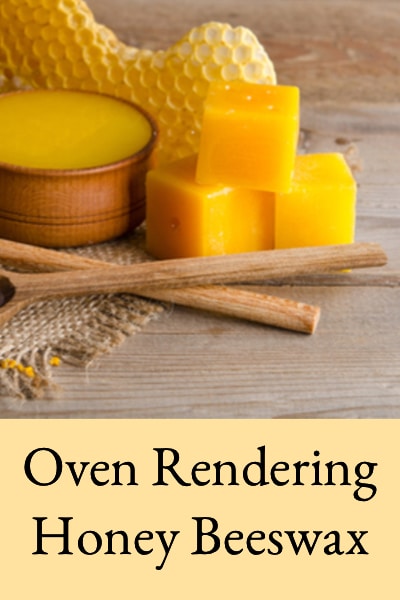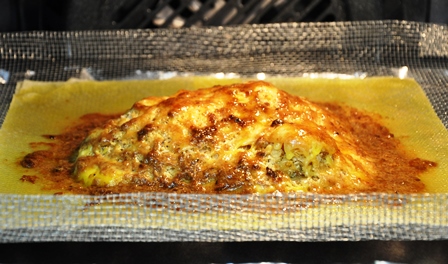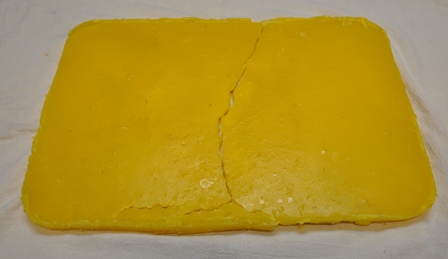Oven rendering honey beeswax is a technique that you can use in the wintertime when beekeeping, gardening, and other outside activities 
Smart beekeepers save the beeswax that accumulates as the cappings are cut off the comb to extract honey – it can be rendered into purified beeswax that can be used for making lip balms, soaps, candles, and many other useful products.
This is a great book for ideas on what to do with beeswax:
Rendering the beeswax is a fairly simple process, but it should be done carefully as beeswax is very flammable (it should NEVER be rendered over an open flame). Wax vapors from overheated wax can also explode if exposed to an open flame, so use an electric heat source, not gas and not flame.
It’s safest to do it outside and we have a double burner hot plate that works well; however, when it’s blustery winter outside, we choose to use the oven.
How To Oven Render Beeswax
We pour about an inch thick layer of water into the bottom of a 11″x14″x2″ pan, cover the top of the pan with wire mesh, put some paper towel on top of the mesh, pile the wax cappings on top of the paper towel, and placed the pan into a 170°F oven. This way as the wax melts impurities are filtered out by the wire and paper towel, and the melted wax floats on the water in the pan.
The photo above shows the wax cappings piled on top of the paper towel as it started heating in the oven. It’s best to keep the oven temperature as low as possible while still melting the wax, and it should definitely never be heated as high as 200°F as this will darken the wax.
The photo above shows the wax after it’s been melting for awhile.

This shows the rendered beeswax on top of the water in the pan shortly after being removed from the oven.
And here’s the finished slab of beeswax with the impurities removed – ready for use. Cappings wax is typically lemon-yellow in color just like this, and makes wonderful health and beauty products.




Tami R Rougeau says
We tried this method with all of the crushed comb I have collected. It worked great! Our question is if there is anything that can be done with the honey water that is left in the bottom of the pan. Is it safe to feed back to the bees after its been heated?
Cassie says
What type of mesh did you use?
Lesa says
Hi Cassie,
It was just a fairly fine stainless steel mesh, you can see it in the photos above.
Justin Bower says
Aprox. How long did this process take in the oven? Does it need to be done more than once?
Lesa says
Hi Justin, it shouldn’t take long to do each batch. We keep the batches small and they only take about 5 to 10 minutes each.
Mike Rininger says
A word of advice for you. I like the idea of filtering the wax with paper towels but don’t make the resulting blocks too large. They’re a pain to deal with, split, or re-melt if you do. Nice site you have here.
Lesa says
Mike, Thank you for both the advice and compliment!
Janine says
Someone gave me a big block of bees wax. Can I put it in a low oven and melt it?
Lesa says
Obviously, from the post above, beeswax can be melted in a low oven. It will melt between 140 – 147 degrees F, you don’t need to get it any warmer and it will discolor (darken) at 185 F.